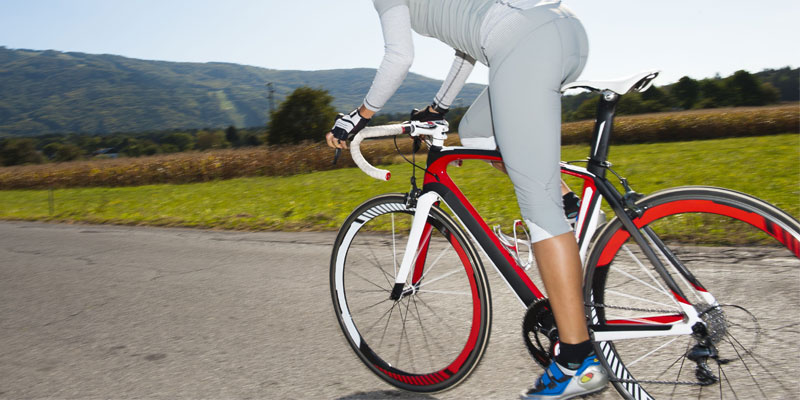This article will show you how to set your bike seat height and handlebars properly. Just a heads up that I may use the words seat and saddle interchangeably, which both mean the same thing.
The seat height adjustment changes how far our legs will extend on each pedal stroke. One of the most common beginner mistakes I see is people riding with their seats too low, which is both uncomfortable and inefficient. However, it’s just as easy for intermediate riders to make the mistake of riding with their seat too high, which underutilises the glutes forcing the quads and the hamstrings to do all the work. Over time, these muscular imbalances can also lead to knee pain and injury.
Inseam Measurement
The first step before changing anything on the bike is to take an inseam measurement to get a ballpark height for your saddle. If you’re by yourself, you’ll want to grab a book with a thick spine and using your thighs hold the book between your legs positioning it as if it was your bicycle seat. Then, find a wall with your shoes off and your feet resting flat on the floor. Make a mark where the top of the book meets the wall. Next, measure the distance from the floor to the mark that you made with a tape measure. Taking that measurement will subtract 10 centimetres and you’ve got a good starting seat height.
Next, we’ll apply our inseam measurement to adjust the bike. Start by loosening the seat post clamp, which is commonly held on by a five-millimetre hex bolt or a quick-release lever. If your seat post is rusted and difficult to budge, you’ll want to lubricate it by using bike grease, lube, or WD-40 and wipe away any rust or excess oil with a rag. For all bikes new and old it’s good to apply a pea-sized portion of grease and spread it around to create a thin layer on the seat post before inserting, which prevents it from seizing and makes it easier to adjust in the future.
With the tape measure starting in the centre of the bottom bracket raise the seat to match the inseam measurement you just took. Re-tighten the seat post clamp and wipe away any excess grease on the exposed portion of the seat post.
Check Results
Now, it’s time to jump on your bike and check the result. For this, you can lean the bike up against the wall and mount it assuming your normal riding posture. On your non-leaning side, scoot your foot forward until your heels are lined up with the back end of the pedal. Then, spin the pedal backwards until the crank arm reaches the 5 o’clock position. If your seat height is set properly, your legs should be fully extended and locked out at the knee but don’t move your hips to try and make your legs straighter as this defeats the purpose of the test.
If your heel doesn’t reach the pedal in this position then your seat is too high and if your leg is bent at the knee then your seat is too low. Returning your foot to the normal pedalling position with the ball of the foot lined up with the pedal spindle, your leg should now have a slight bend at the knee. At this point, it’s also smart to write down your seat height measurement or mark it on your seat post with a piece of electrical tape in case you need to disassemble the bike for travel and you won’t have to go through this process again.
Handlebars Position
The handlebar setup is fundamental for comfort and it’s easy to make those changes. It also makes a huge impact on the comfort you wouldn’t necessarily know until you try it. There are two things you can do; one is to change the stack height and the other one is to change the stem.
Changing the stack height is quite straightforward. Just make sure that you remove any of the spaces that are under the stem and put them on the top. In terms of the stem length, there are plenty of options out there and again you can make those changes yourself quite easily.
If you find that you’re feeling like it’s too far away or quite stretch down, it is an indication that the bars are too far away from you. Likewise, if it is feeling too constrained, it’s too close. Another indication of whether you’ve got your bars in the right position is also to consider what your arms are like. Ideally, they wouldn’t be locked out when you’re on the bars. There should be a slight little bend at the elbows, which takes some of the tension.
Conclusion
So, now that you’ve set your seat height handlebars, I’d recommend riding it for a few days and seeing how it feels. Anytime you change your fit, it can feel strange at first but after a few days, your body will adjust to the new feeling. If you do decide to make any adjustments up or down make them in small increments no greater than a centimetre at a time.

